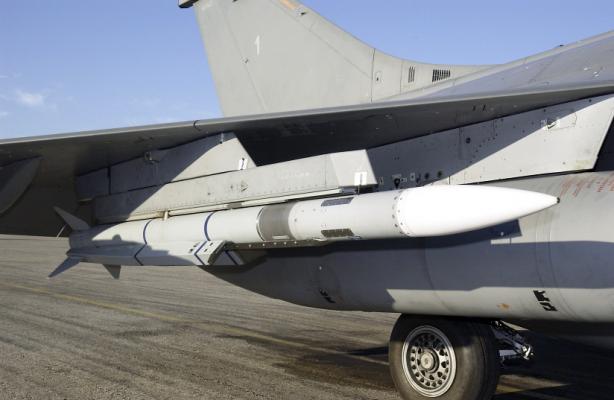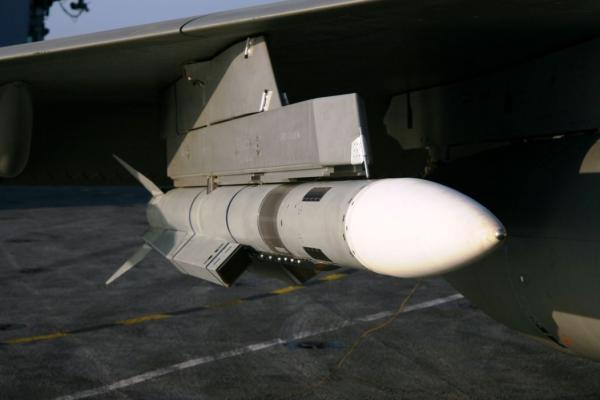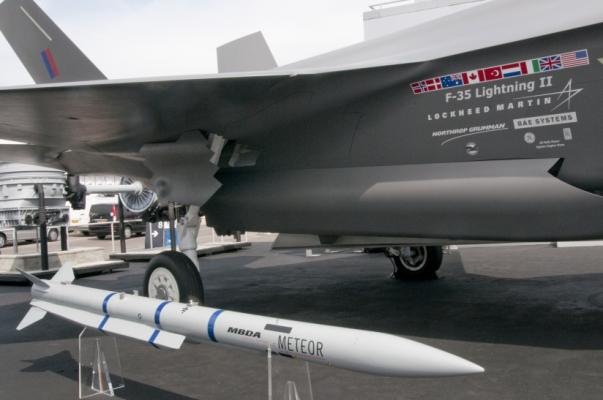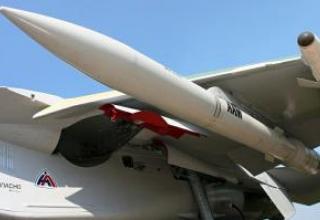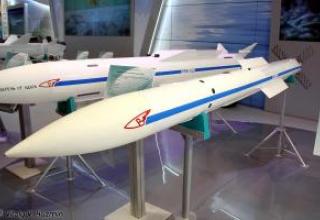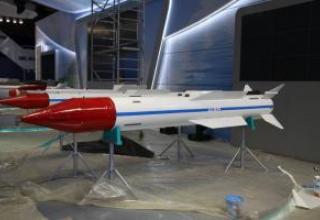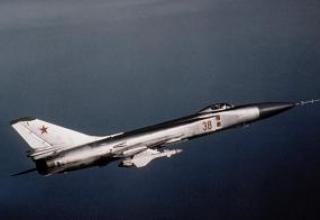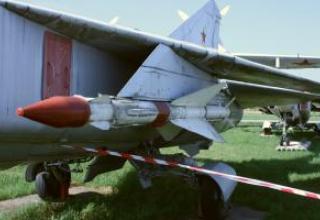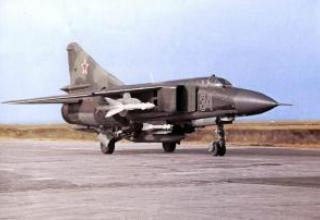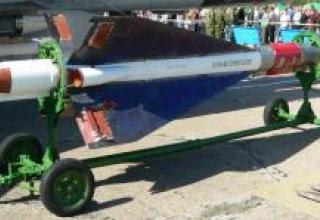The Meteor long-range aviation guided missile (ALC) is designed to engage existing and prospective air targets out of direct line of sight, day and night, in the front and rear hemispheres, against the ground and with active radioelectronic countermeasures.
The main developer of the missile is the company MBDA (UK), the contract for the development was signed on December 23, 2002. Saab Bofors Dynamics, Bayern-Chemie Protac, Inmize, TDW, LiteF GmbH take part in the project.
Meteor is being developed by order of six European countries - France, Germany, Italy, Spain, Sweden and Great Britain.
Meteor is positioned as an air combat superiority rocket and can be used by the main European fighters EF-2000 Typhoon, JAS-39 Gripen (see photo) and Rafale (see photo). The advanced F-35 Lightning II and Eurofighter fighters will be equipped with Meteor missiles (see photo).
Delivery of the first Meteor FTLs is scheduled for 2012. The total volume of missile purchases by European customers is estimated at 8,000 units. The British Air Force is scheduled for initial readiness for combat use in 2014-2015. Swedish Army Material Supply Agency (FMV) announced that Meteor missiles will add to the range of Swedish fighter arms by the end of 2013. Germany has planned to purchase 600 missiles worth 544 million euros.
The improvement of the Meteor boost-phase control system and its combat capabilities continue. Research and development work is being carried out to use it as a means of destruction in the MEADS and SLAMRAAM anti-aircraft systems. The British Air Force is interested in developing a new long-range anti-radar missile to replace the AGM-88 HARM based on Meteor.
Composition:
The rocket (see the scheme) is made according to the normal aerodynamic scheme and has a high value of transverse V-wing (45°). For aerodynamic control and stabilization, a cruciform tail fin is used.
The propulsion system combined with an integrated layout consists of a direct-flow air jet engine (DAS) with a modulo-adjustable thrust and a starting accelerator, which are placed in a single housing. The launch accelerator is equipped with a low-smoke blended fuel charge and, after separation of the rocket from the launch vehicle, ensures its acceleration to the launch speed of the SARD march.
The gas generator charge of the marching SARD is based on heavy boron containing fuel with the volume heat of combustion more than 5x104MJ/m3. The consumption and composition of the generated gas can be changed in a sufficiently wide range in accordance with the flight conditions and the direct-flow circuit operation mode for all conditions of the missile's combat application. The depth of control of the generated gas flow of the SARD is more than 10:1 and is provided by a special valve in the nozzle of the gas generator.
The combustion chamber and the engine gas generator are made of heat-resistant steel. Air intakes located on the outer side of the rocket body are made of titanium. The engine is designed by Bayern-Chemie Protac.
The use of the RVD provides an increase in the average rocket speed and range. According to advertising materials, the maximum range of the missile reaches 150 km.
The combat unit is a shrapnel and blast furnace with a weight of 25 kg, equipped with radar non-contact and contact fuses. The fuse has four antennas located in the nose section, and when a target is detected, it ensures that the BC is detonated at a distance optimal for causing maximum damage. The fuse is designed by Saab Bofors Dynamics, a Swedish company.
A combined control system is used to control the missile: a command-inertial system at the starting point of the trajectory and a homing system at the final point.
The missile is equipped with a two-way asynchronous data line channel and is capable of receiving control commands from the carrier aircraft and interacting aircraft, including AWACS system aircraft. The transmission of these commands corrects the missile by updating target position information, compensating for aiming errors, and the drift of the inertial control system, which increases over time. Telemetry information from the missile's on-board systems is transmitted to the carrier in real time via a return data channel.
The Meteor rocket is equipped with an active homing radar head, which is based on technologies used on Aster and MICA missiles. In addition to the standard high repetition rate mode, the medium-range repetition rate mode has been introduced in the missile's ARGS to meet the requirements for all-round application and engagement of low-flying targets. By using sophisticated signal processing algorithms, Meteor is able to track and engage targets in the group, as well as under conditions of strong interference and countermeasures. The modified proportional guidance method is used to solve the task of launching the missile into the target area and pointing at the final trajectory section.
In accordance with the Integrated Logistics Support concept, Meteor is delivered to the customer in a special container equipped with a diagnose system and does not require special verification equipment during storage. If a malfunction is detected, the rocket in the container is returned to the manufacturer.
Characteristics:
| Maximum firing range, km | >100 |
| Maximum flight speed, M | 4.5 |
| The speed required to start a direct-flow engine, M | 1.8 |
| Dimensions, mm: - length - diameter - wingspan - plumage scale |
3650 180 400 630 |
| Starter weight, kg | 165 |
| Weight of combat unit, kg | 25 |
| Permissible target overload range, units | up to 11 |
Testing:
Having unique flight and tactical characteristics, MiG-25P for a long time was operated only as part of the Soviet air defense fighter aircraft. In the early 1980s, its delivery abroad began, and soon its baptism of fire took place. Even before the beginning of the large-scale Lebanese conflict, in spring 1981, the Syrians announced the destruction of the F-15.
According to the Iraqi Air Force Command, from December 1982 to October 1986, during the Iran-Iraq war, the Iraqi MiG-25 shot down an Iranian F-5E fighter, an EU-130E counter-electronic aircraft, and three Phantoms, including one in a reconnaissance version.
During Operation Desert Storm, January 17, 1991, Iraqi MiG-25 managed to shoot down an American F/A-18, and in 2002 - an unmanned reconnaissance drone Predeitor.
Sources:
- Системы управления вооружением истребителей: Основы интеллекта многофункционального самолета /РАРАН; Л.Е.Баханов и др.; под ред. Е.А.Федосова М.:Машиностроение, 2005.400с. (Справ.б-ка разработчика исследователя).
- www.mbda-systems.com
- www.bayern-chemie.com
